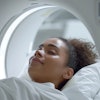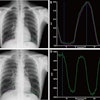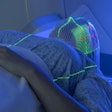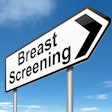Dear AuntMinnie Member,
When a 25-year-old man who had been playing hockey showed up at Thomas Jefferson University (TJU) complaining of lower back pain and right lower extremity numbness, he was immediately sent to the emergency department for evaluation for spinal cord injury.
After a CT scan was performed, TJU radiologists were baffled by the presence of a number of uniformly shaped hyperattenuating gastric masses. Further investigation found that each of the masses had anthropomorphic features -- namely, arms, feet, and heads -- and even facial features like eyes and a smile.
What were the masses? You'll need to work today's Case of the Day to find out, but let's just say they would leave a sour taste in anyone's mouth. Check it out by clicking here, and we extend our thanks to TJU for the unique contribution.
Have you encountered a similarly unique case in your practice? Help us publish it with our new case authoring tool by clicking here.
X-ray art
And now for something completely different: a profile of a Dutch medical physicist who creates artistic "nature scenes" by taking x-rays of animals and plants.
Arie van 't Riet, PhD, got his start in x-ray artistry after a friend asked him to scan an oil painting. He began x-raying flowers and then moved on to careful compositions that combine animals (all of which are deceased) with plants in a sort of "biorama."
His artwork is going to be featured at the upcoming RSNA 2014 meeting in Chicago, but you can get a sneak peak in our Digital X-Ray Community by clicking here or going to xray.auntminnie.com.
Gray finale on PACS
Meanwhile, PACS consultant Michael Gray finishes up his three-part series on the changing PACS paradigm with a new article in our Imaging Informatics Community.
In the finale, Mr. Gray addresses what he calls the PACS 3.0 concept, in which PACS loses the department-centric approach it has had since its early days. In its place is a new paradigm that puts control in the hands of hospital IT staff, making medical images more available throughout the healthcare enterprise.
The backbone of PACS 3.0 is the vendor-neutral archive, with healthcare staff gaining access to images with universal viewers that support multiple types of images -- not just radiology. Learn more about the model by clicking here, or visit the community at informatics.auntminnie.com.
While you're in the community, check out a new article on how important it is for radiologists to get involved in social media. Participating in sites such as Facebook and LinkedIn is no longer optional for radiologists, who need to step up their social game if they want to maintain and develop relationships with both patients and referring physicians. Read more by clicking here.

















